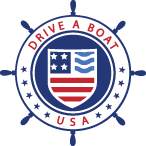What is Needed for Steering Control on a PWC?
Steering a PWC takes some practice! The more you know about how your PWC works, the better you will be able to adjust to different situations and avoid problems. Let’s take a look at how PWC steering works and what it takes to maintain control of your watercraft.
 How a PWC works
How a PWC works
Personal Watercraft (PWC) are powered by a jet drive system. Water is sucked into a pump and then expelled under high pressure through a steering nozzle located at the back of the unit, which propels the watercraft forwards.
The jet of pressurized water is controlled by the steering mechanism. When the steering control is turned, the steering nozzle moves in the same direction. For instance, when you turn the steering control to the right, the nozzle turns to the right, pushing the back of the vessel to the left and making the PWC turn right.
What happens to a PWC when the throttle is released
It’s important to understand how your PWC works because the propulsion mechanism also controls the steering. Unlike a boat, a PWC cannot be turned left or right unless it is being powered. If you release the throttle, put the PWC in idle, or turn off the engine, you will lose all steering control. Your PWC will continue to go in the same direction regardless of what you do. This also applies to many other jet-propelled vessels.
Some newer PWC models have an “off-throttle steering” system that provides minimal steering capability even when the throttle is released. This works by briefly applying some throttle when the handlebars are turned hard over, allowing the jet nozzle to redirect and change the PWC’s direction slightly. However, this steering input is limited compared to when the throttle is engaged, so it may not allow you to fully avoid a collision.
Throttle function and steering capability
To control and propel a jet ski forward, you need to use the throttle lever. You can find it on the right-hand side of the handlebars, within easy reach of your index finger.
As you squeeze the lever towards you with your index finger, the throttle opens up, increasing the flow of water through the jet propulsion system and propelling the craft forward. When you use the throttle correctly, you have smooth and intuitive control over the acceleration of your PWC.
The throttle allows you to manage the craft’s speed and also its direction at all times. Proper throttle operation is key to maintaining control over your PWC’S steering.
It can be tricky for first-timers to use the throttle correctly, but once you get the hang of applying slow, steady pressure, you’ll be able to build up speed in a way that allows you to control both your acceleration and your steering.
- Keep in mind that putting full pressure on the throttle right away could make you lose control.
- Also, changing speed too quickly while turning could impact your steering.
How to steer your PWC in an emergency
In an emergency situation, the instinctive reaction is to release the throttle. But on a PWC, this is the wrong thing to do if you need to steer to avoid a collision, as it eliminates most of your steering ability. It’s better to maintain some throttle and steer around obstacles when possible. Releasing the throttle should only be done when preparing to come to a complete stop.
Tips for steering a PWC
Steering on personal watercraft (PWCs) is controlled by handlebars that are connected to the steering nozzle at the rear of the PWC. Since your PWC steering is linked with its propulsion, there are a few steps to follow when getting going:
- Make sure your PWC is in water that is at least knee deep.
- Mount the PWC before powering it up and be sure your lanyard is attached securely. Turn the key and press the starter button.
- If your PWC is older, it may start moving slowly forward at this point, even if you are not accelerating. Newer models will not allow this to happen.
- Hit the throttle to begin to move at more than idle speed. Only now can you properly control the steering of the vessel.
If you are approaching a dock, shoreline, or another vessel too fast, and you react by releasing the throttle to idle or shutting off the engine, you will lose all your ability to manoeuvre your vessel.
Steering in reverse
If your PWC is equipped with a reverse feature, it should be used with extreme caution. Before using the reverse operation, take the time to practice using it at idle speeds only. Get a feel for how it affects the PWC’s handling, balance, and maneuverability.
Reverse steering is most useful for manoeuvring in tight spaces or when docking. Using the reverse feature at speeds higher than idle can potentially cause dangerous situations, such as being thrown forward or ejected from the PWC.
Additionally, using reverse at high speeds can cause the stern (rear) of the PWC to rise up, forcing the bow (front) down and potentially submerging it under water. This bow submersion can lead to swamping the craft and potential loss of control.
Steering a PWC at different speeds
Steering responsiveness changes depending on how fast the PWC is moving.
- At lower speeds, the PWC will have higher maneuverability. If you aren’t going too fast, you will be able to make sharp turns.
- At higher speeds, PWC steering is less responsive. Riders have to be more careful not to lose control or be ejected from the vessel.
Riders should get familiar with the watercraft’s handling characteristics at different speeds to be sure they can maintain control at all times.
Understeering and oversteering
Oversteering occurs when the rider turns the handlebars too sharply. Sudden change in direction can potentially lead to loss of balance or ejection from the craft.
Understeering happens when there is insufficient steering input. This can pose a risk if you’re trying to avoid an obstacle or steer through a narrow passage.
Practice is the best way to avoid oversteering and understeering.
Important safety information: lanyards for PWC operators
Most modern personal watercraft (PWC) models are equipped with a critical safety feature – the lanyard.
The lanyard is physically connected between the PWC’s controls and the operator, typically attached to the life jacket or wrist. If the operator’s body is separated from the PWC for any reason, for example if they fall off, the lanyard will pull free and activate the emergency shut-off switch. This immediate shut-off of power is a vital safety measure that can prevent further loss of control or potential accidents if the operator becomes ejected from the craft.
The use of the lanyard is mandatory for PWC operation and is also recommended in preventing propellor strikes when boating.
Note: Sea Doo brand PWCs come with two types of lanyards, yellow and green. Green lanyards are intended for beginner PWC operators and they will limit the capacities of the PWC so that it operates at lower speeds while you learn to control it.
Key elements of steering a PWC
Steering a PWC safely and effectively involves the following key components:
Jet Pump: The jet pump propels the PWC forward via a powerful water stream, which is drawn in then expelled via the steering nozzle.
Steering Nozzle: Riders have direct control over the water stream via the steering nozzle, which is connected to the handlebars. Split-second decisions are made possible by advanced features like variable trim systems, so you can navigate quickly through obstacles and adapt to changing conditions.
Impeller: As water is drawn into the jet pump, it passes through the impeller, a set of curved, rotating blades. The shape and setup of the impeller fins directly affect how much force (thrust) is created, which in turn controls how well the craft steers. Riders can adjust the angle and tilt of these fins to change how much water gets pushed back, giving them precise control over speed and handling.
Stator: After passing through the impeller, the water enters the stator, which redirects the flow of the water to increase its velocity and efficiency. This redirection is key to achieve optimal steering response.
Handlebars: Riders use the handlebars to steer the PWC. They should be held in a relaxed, firm grip, so you can make subtle adjustments as needed without training your arms. Avoid sudden movements, which could lead to loss of steering control.
Throttle: The throttle determines the speed and power of the engine. It is controlled manually, and when adjusted gradually, allows for smooth steering and sharp turns. This is a sensitive element of the machine, and responsiveness may vary among different models. Always take the necessary time to familiarize yourself with your equipment.
Weight distribution: Riders can affect the steering of their PWC by adjusting their weight. Balancing the weight between the feet and distributing weight evenly on the seat will also influence the watercraft’s stability.
Environmental factors: External factors such as current, wind and wave conditions can make the PWC more difficult to steer, requiring riders to exert more effort and make appropriate adjustments to maintain control and stability. For example, strong winds may demand more pressure on the handlebars to steer efficiently.
Operate your PWC legally with a boating license from Drive A Boat USA
Depending on where in the U.S. they live, PWC operators may need a boating license to take to the water legally. Always check your local regulations to confirm that you are obeying all safety rules. Remember, you always need to wear the right type of PFD! Inflatable PFDs are not approved for all types of water sports.
Following a boater safety course is a great way to learn what you need to know to enjoy using your watercraft without mishaps. PWC operators in New York, California and Florida can earn their NASBLA and U.S. Coast Guard approved license online today from Drive A Boat USA!


 How a PWC works
How a PWC works